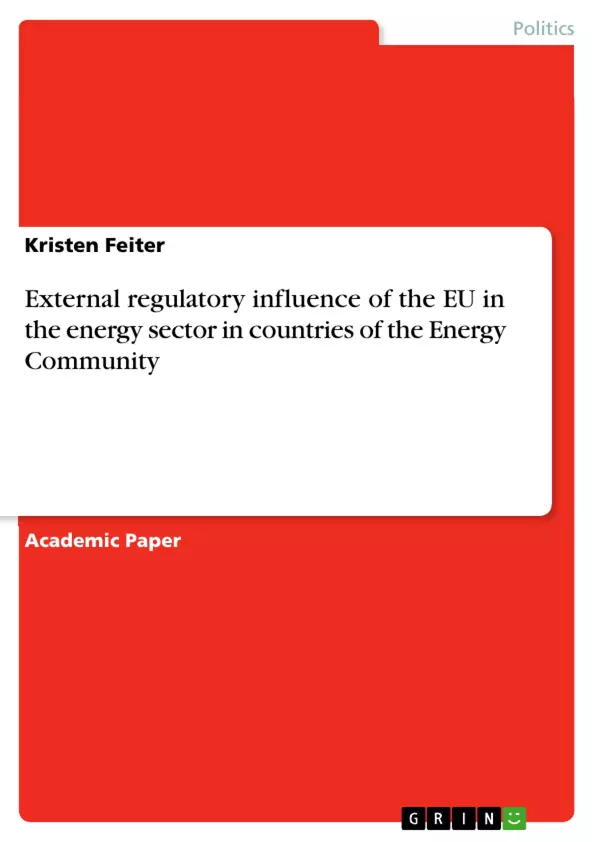Energy policy is one of the most electrifying aspects of European integration and regulation. Ever since the goals of the EU energy-policy have first been mentioned in Article 194 TFEU of the 2009 Lisbon treaty, this sector has gained ever more importance. It is remarkable, that it took the EU so long to integrate, even that the EU started as a project in the energy sector. The 1952 Coal and Steel Treaty, together with the 1957 Euratom Treaty are one of the major founding treaties of the European Community (EC). By regulating the internal market of the EU, the Commission (COM) attempts to complement the existing rules in order to ensure the functioning of the internal market. Historically, the energy markets have been organised as public owned monopolies that were operated at a national level. In these times of independent but interconnected energy networks, only wholesale transactions were possible. These transactions took place between the owners of the energy grids (Vasconcelos, 2005; Matlary 1997). Most countries saw their energy markets as an important public service that was a key strategic asset and from large geopolitical and economic importance. This lead to a reluctance of liberalizing their respective energy markets to the extent that by 1994, only seven Member States (MS) have created independent regulatory agencies (Padgett, 2011; Eberlein 2008, Bartle 2005). By introducing the energy packages, the COM hoped to achieve a more secure, competitive and sustainable energy supply for the EU. The internationalisation of the energy sector and the progressing integration of the EU required the necessity of harmonisation of laws and standardisation in this sector. Three European energy packages have been published by the COM to regulate the internal market and also to include third countries and other markets, in order to reach the common energy-related goals and climate targets. Whilst governing and harmonising the internal market, the EU has developed from being an experiment for market integration towards being one of the largest and most important economic and political global entities. This special role also implied new opportunities and consequences, such as regulatory influence towards the internal- and external market, as well as towards other economies and economic unions. Since the 1986 Single European Act (SEA), the externalisation of economic and social agendas can be observed.
Inhaltsverzeichnis (Table of Contents)
- Introduction
- The first Energy Package
- The second Energy Package
- The third Energy Package
Zielsetzung und Themenschwerpunkte (Objectives and Key Themes)
This research aims to understand the external regulatory influence of the European Union (EU) in the energy sector, specifically in countries of the Energy Community (EnC). It examines how the concept of Market Power Europe can explain why and to what extent the EU exerts external regulatory power and why countries comply with EU regulations.
- The EU's external regulatory influence in the energy sector of EnC countries
- The role of market power in shaping regulatory compliance
- The impact of EU energy packages on energy regulation in EnC countries
- The evolution of EU energy policy and its implications for third countries
- The relationship between market integration and regulatory harmonization
Zusammenfassung der Kapitel (Chapter Summaries)
- Introduction: This chapter provides an overview of the EU's energy policy and its evolution, highlighting the significance of the energy sector in European integration and the emergence of the EnC. It discusses the EU's external regulatory influence and the concept of Market Power Europe as a framework for understanding compliance by third countries.
- The first Energy Package: This chapter focuses on the initial directives introduced in 1996 that aimed to liberalize energy markets within the EU. It examines the challenges of harmonizing regulations across Member States and the use of "soft" powers to encourage collaboration. The chapter also discusses the early implications of these directives for neighboring countries, particularly Ukraine and the Balkan countries, which were later incorporated into the EnC.
- The second Energy Package: This chapter explores the second energy package, passed in 2003, which introduced further measures to liberalize energy markets and strengthen regulatory cooperation. It discusses the establishment of independent National Regulatory Authorities (NRAs) and the challenges of achieving regulatory coordination at the EU level. The chapter also examines the impact of the second energy package on EnC countries, highlighting the case of Serbia and the growing importance of governance by conditionality.
- The third Energy Package: This chapter briefly introduces the third energy package, published in 2009, which formally established regulatory coordination within the EU internal market. It mentions the creation of a regulatory agency at the EU level and the ongoing efforts to harmonize regulations.
Schlüsselwörter (Keywords)
This research focuses on the EU's external regulatory influence in the energy sector, particularly in countries of the Energy Community. Key concepts include Market Power Europe, energy packages, regulatory harmonization, governance by conditionality, energy market liberalization, and the role of national regulatory authorities.
- Quote paper
- Kristen Feiter (Author), 2018, External regulatory influence of the EU in the energy sector in countries of the Energy Community, Munich, GRIN Verlag, https://www.grin.com/document/1007172



